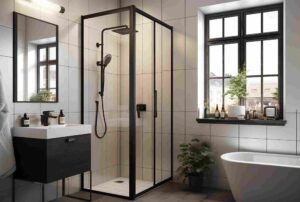um be able to define the concept of Architectural Visualization project, we first have to discuss briefly the theories of Structure and architectural visual images separately.
A rather simplistic view of architecture is “both the method and the product of planning, designing, and creating buildings or some kind of other structures. ” (Wiki).
Architectural Visualization can be seen analytically as consisting of the components framework, surroundings, interiors, surroundings, light and materials.
According to (Wiki) architecture visualisation studio in HCMC or Hanoi or Rendering is identified may also be described more synthetically:
Step 1. Inquire abuout And Make Assertions.
Clearly formulated right questions before the project starts, will help you to minimize deadlines and provide the most suitable outcome for the customer, that is the photograph reasonable renderings or animations. At the starting of the project we usually make an effort to clarify all the details and inquire as many questions as you can. This help us all not to spend customer’s time in the future as well as provide effective work with our visualizers. Typically the scope of the questions rely on the project: interior, external, animation, 3d modeling or virtual spectacle tour.
Step 2. Get acquainted with all major data elements and define more exactly the end result.
The primary data always varies, even if the goal for every project is the same — to receive the picture of the maximum quality. In circumstance the consumer does not have an accurate assignment for visual images, you should dig into details and clear out whether all the information is agreed also it won’t change in the future. for example, drawings and sketches for the exterior visualizations or furniture and decoration situation in the interiors.
Step 3. Pick best references for 3d modeling and visualization.
Clients may describe all in details or show the items of decoration which are desired from the project, but the best way is to provide the illustrative images as examples. It will eventually save much time that help to get on well with the consumer from the early levels of the project. It’s required to have images of all the accessories to be used in the final work.
Step 4. Manage the work process.
The job process should be organized in the way to avoid as little modifications as possible from the customer part. All the process should be broken into three stages: first, medium and the last one. It will save time for both of you.
Step 5. Follow strictly the job.
If you are working on 3d visualization only, not offering the design, better follow all the details which customer has agreed. It is not recommended to combine the textures or colors only because will not like something, this may lead to delays and many corrections from the customer side.
Stage 6. Work only without groundless claims.
Estimate your real feasibility and mention all the limits that demonstrate your professional competence. Carry out not promise something under sunlight. Try to manage all the work always in time.
Step seven. Learn, learn and pay attention to.
Try to look for ideas in everything you are surrounded. Research the color, structure, take up pictures. You should realize what kind of product you want to sell. It can be a quick preview which does not take much time or the extremely good work which will differentiate from the others. Anyway, look for something that inspires you.





